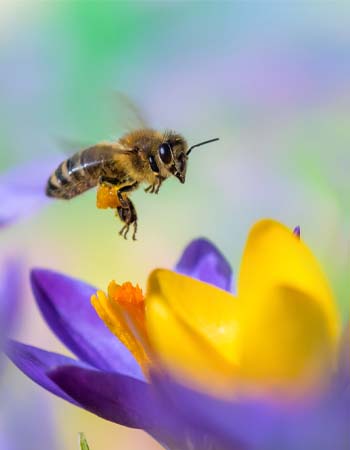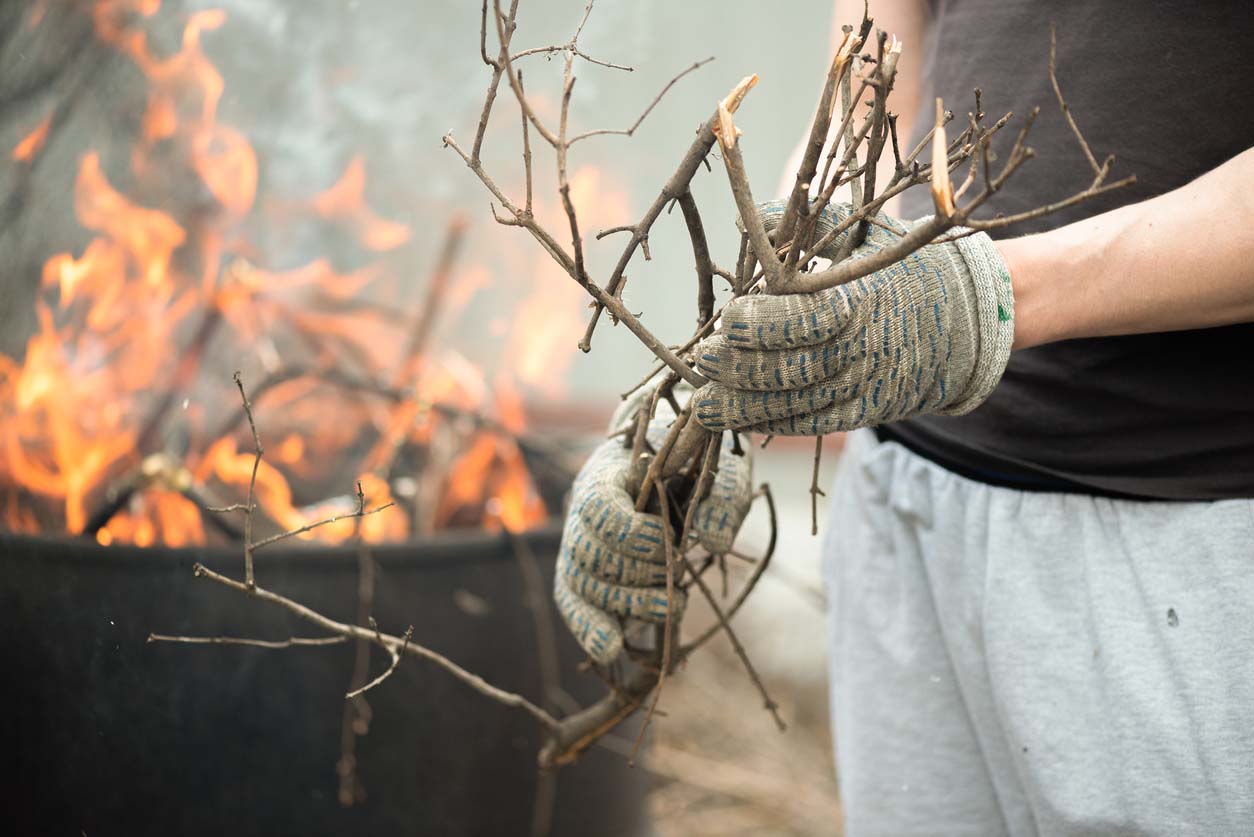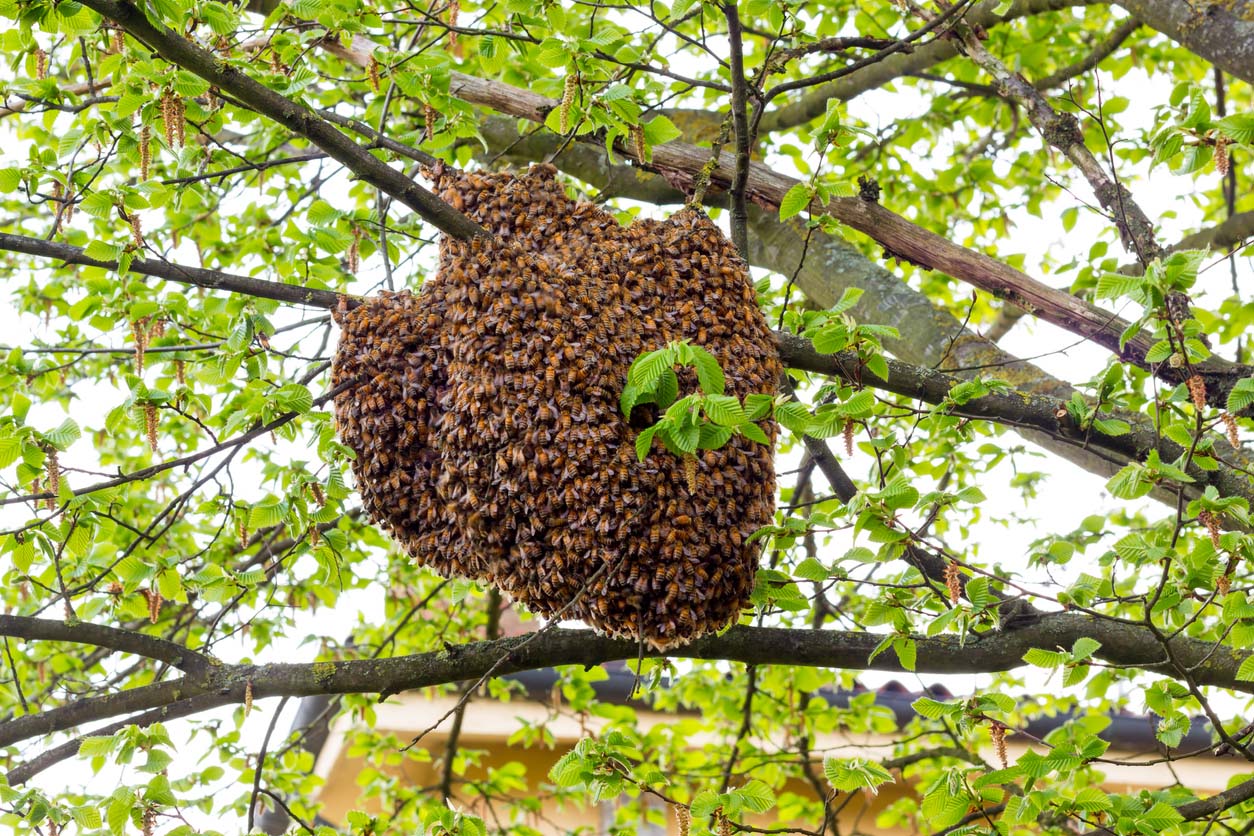

We may earn revenue from the products available on this page and participate in affiliate programs. Learn More ›
Many homeowners deal with various types of bees swarming their homes at one point or another. Whether they’re ground bees, bumble bees, sweat bees, or another type of bee, having a bee colony or hive in or around your home can be concerning, especially if you’re allergic to bee stings. But since bees pollinate plants and play an important role in the ecosystem, it’s important to avoid killing them if possible.
When researching “bee removal near me” or “bee exterminator near me,” homeowners will likely find countless results to browse through. But only a few strategies will actually help get rid of bees for good without harming them. Here’s how to keep bees away and how to know when it’s time to call in a professional.
Time required: A few minutes to a few hours.
Difficulty: Intermediate
Estimated cost: $1 to $1500
Tools & Materials
Bobvila.com may earn a commission from purchases made through these links.
Before You Begin…

There are many ways to get rid of bees, from using a bee repellent to hiring a bee removal specialist. Homeowners should consider the type of bee they’re dealing with before proceeding. For instance, honey bee removal might differ from ground bee extermination. It can also be easy to confuse bees with their aggressive cousins, hornets and wasps. Generally, bees have wider bodies, while hornets and wasps have thinner bodies with narrow waists.
You can Google things like “how to get rid of ground bees,” “how to get rid of bumble bees,” “how to get rid of sweat bees,” etc. But if it’s important to you to preserve bees and not resort to killing them, these search results can prove unhelpful. And unless bees are impeding your comfort or posing a safety threat to you or your pets, consider leaving the bees where they are.
Tips for How to Get Rid of Bees
- Seal any gaps or cracks in a home’s exterior.
- Opt for natural deterrents to keep bees away.
- Hire a professional beekeeper or humane bee removal specialist to get rid of bees.
Safety Considerations
- Don’t attempt to undertake any of these steps if you are allergic to bee stings.
- Wear long sleeves and pants and avoid perfumes, scented soaps, and lotions if working near bees.
STEP 1: Seal any gaps bees can use to enter a home.
Bees can enter the home through small cracks and crevices on the exterior. If you have bees on your property, you’ll want to take precautions to seal these holes, so bees don’t find their way inside. Use caulk or mesh screening to ensure the gaps are properly sealed. However, you will want to ensure there aren’t existing nests or hives in the holes you’re sealing, as this can cause bees to chew their way out and into the home.
STEP 2: Consider natural bee deterrents like plants or spices.
There are many natural options homeowners can be used as bee repellents. Many plants can help to keep bees away, including cucumber, basil, marigolds, geranium, eucalyptus, wormwood, mint, pennyroyal, and pitcher plant. Planting these in your garden can discourage bees from visiting. Sprinkling cinnamon or garlic powder around the yard and exterior of their home can also act as a quick and easy deterrent.

STEP 3: Build a fire to drive bees away.
Smoke is a great deterrent for bees—especially when it comes to honey bees, since they are sensitive to the smell. To get bees to leave and keep them away, build a smokey fire using cardboard and dead firewood directly under the bee hive (if present). After doing so, you will want to find safety inside and allow the smoke to deter the bees, as they might become aggressive.
STEP 4: Hang mothballs around your property to discourage bees.
Mothballs work well to keep bees away, acting as deterrents. You can place mothballs in stockings or cheesecloths and hang them near beehives to drive them away. The smell will likely deter the bees and keep them from coming back. However, be careful not to allow children or pets near the area. Mothballs contain chemicals (naphthalene or paradichlorobenzene) that can be dangerous to inhale.
STEP 5: Water your lawn regularly to keep ground bees at bay.
Ground bees create nests in the ground, especially on dry patches of land. These nests often look like holes in lawns. If you’re wondering how to kill ground bees or how to keep bees away, you will want to be sure to water their lawns regularly: These bees prefer dry soil that’s easy to burrow into. Simply keeping lawns well-hydrated can make it difficult for ground bees to burrow and build an underground nest.

STEP 6: Hire a humane bee removal specialist to relocate the hive.
For homeowners looking to get humanely rid of bees rather than worrying about how to kill bees, consider hiring a humane bee removal specialist to relocate the hive. These specialists know bee behavior and can safely relocate a hive to an area where they won’t bother anyone. Local beekeepers may also offer bee removal services for free.
Natural deterrents can work well to keep homes safe from bees, but many safety concerns come with removing bees without professional help. Hiring one of the best bee removal services like Ehrlich Pest Control can resolve your issue.
FAQs
Still curious about removing bees from a home or yard? Here are the answers to some of the most commonly asked questions about how to get rid of bees.
The fastest way to get rid of bees outside the home is by hiring a bee removal service.
Yes—bees die almost instantaneously after being exposed to vinegar.
There are many natural bee repellents to consider, from opting for plants that bees don’t like to sprinkling cinnamon around the yard.
Scents like basil, eucalyptus, mint, and smoke will effectively keep bees away.
Homeowners should check their houses for convenient entries, bright colors, garbage or discarded fruits, and dampness that might attract bees.
Bees tend to be most active during the day, as they cannot see well in low lighting.
